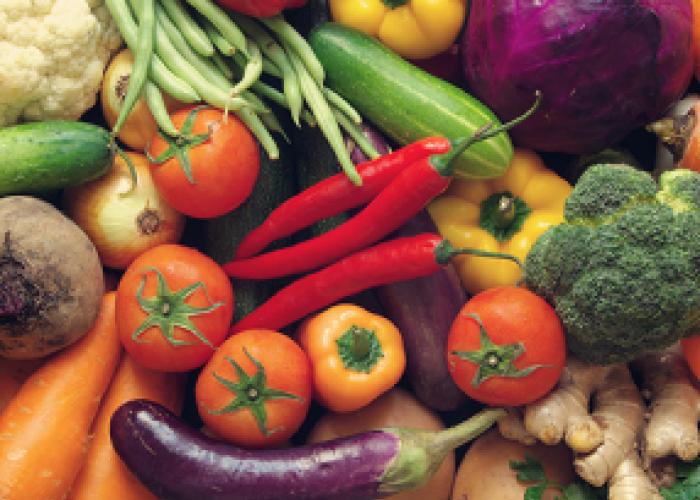In today’s B2B food landscape—from industrial processing to professional kitchens—choosing clean‑label ingredients, organic certifications, and plant‑based solutions is no longer a marketing flourish but a competitive lever. Consumers and buyers ask for short ingredient lists, transparency on origin, and sensory performance on par with “traditional” products. In this context, a technical partner that combines international sourcing, applied R&D, and fast logistics is what turns good intentions into the launch of customized recipes and scalable specialty lines.

Table of Contents
What “clean label” really means (and why it matters)
“Clean label” has no single legal definition in the EU, but it broadly refers to recognizable ingredients, absence of artificial additives, minimal processing, and maximum transparency. The push comes from consumers: according to NielsenIQ analyses, ingredients now rank alongside quality and price among top purchase drivers, with the share of shoppers demanding clear on‑pack information rising from 69% (2018) to 76% (2023). In addition, products positioned as clean label have outperformed other categories, posting +8% in the latest NIQ analysis year.
On practical meaning, Innova Market Insights shows a global convergence: “clean” primarily means no additives, natural ingredients, and—more and more—environmental coherence of the proposition. Two in three consumers say they are at least partly influenced by clean label in their choices; in Europe, the trend is driven by authenticity, naturalness, and clarity in communication.
From a regulatory standpoint, the EU framework imposes labelling obligations (ingredient list, allergens, origin where relevant), while some categories—such as flavors—are governed by Union‑level rules and positive lists. The absence of a legal definition for “clean label” makes alignment with existing rules and documented compliance essential.
Organic: resilient demand between the UK and the US
After inflationary shocks, organic is growing again. In the United States, the Organic Trade Association reports 2024 sales of $71.6 billion, +5.2% year‑on‑year—more than double the total food market growth rate. For the first time since 2020, organic outpaced the market average, indicating structural demand across categories.
In the United Kingdom, the Soil Association Organic Market Report 2025 shows 2024 sales at £3.7 billion (+7.3%), with organic units growing four times faster than non‑organic in grocery retail. A strategic data point for B2B: only 3% of UK agricultural land is organic, so the supply chain remains structurally dependent on imports—an opportunity for those managing reliable overseas sourcing.

Plant‑based: between market physiology and a new “clean” wave
Plant‑based has moved past the “novelty at all costs” phase and is entering a more selective maturity. In the US, the 2024 retail plant‑based market (milk, yogurt, ice cream, cheese, meat & seafood, eggs, and ingredients) is worth $8.1 billion, more than double 2017; globally, plant‑based retail reached $28.6 billion. The picture is mixed: alternative dairy continues to grow, meat analogs have rebalanced, while categories such as plant‑based eggs show lively dynamics (also due to health factors in poultry supply chains).
The “ultra‑processed” narrative has forced a step change: leading brands are simplifying recipes, reducing salt and fat, and targeting short lists to capture clean‑label sensibilities. Beyond’s recent repositioning (shorter recipe, more “natural” naming) is emblematic: more essential ingredients, less perceived complexity. For formulators, the message is clear: flavor and texture are non‑negotiable, but label credibility makes the difference for mainstream adoption.
Practical implications for R&D: from theory to plate
Translating these trends into technical specifications means acting on four drivers:
- Short, recognizable labels. Prioritize “kitchen‑cupboard” raw materials (fruit, vegetables, legumes, grains, purées, natural fibers), limit additives, and support technological functions with processes (cuts, portions, IQF) and selection of varieties that perform best in recipe. (Innova: clean = naturalness + no additives + transparency).
- Documented organic. Integrate organic ingredients where positioning requires it, ensuring traceability and sensory compatibility across lots/countries to guarantee consistency in production (UK & US: organic growth outpacing the market).
- Plant‑based with performance. Work on plant matrices and pre‑treatments (e.g., purées, IQF cuts, blanched) that optimize yield, stability, and mouthfeel; where structure is needed, favor solutions perceived as “natural” by end users. The challenge is to surpass the “tastes good but not natural” dichotomy by focusing on essential recipes and clean processes.
- Supply‑chain transparency. Communicate origin, seasonality, farming practices, and impacts (water, emissions, waste) in a verifiable way. Transparency now rivals price and quality as a purchase driver.
Why supply chain matters more than the claim
Demand exists; the differentiator is the ability to deliver. The UK, for example, is growing in organic but remains dependent on imports; in the US, organic is accelerating and plant‑based is consolidating significant shares in retail and foodservice. For B2B buyers this translates into a need: vegan product suppliers for B2B and frozen fruit import partners that can balance continuity, sensory standards, and multi‑market compliance.
Having the “right” ingredient is not enough: multi‑country sourcing plans, buffer stocks, varietal/country alternatives, and cold‑chain logistics that protect integrity from harvest to unloading are required. Here, frozen is a natural ally to clean label: rapid freezing preserves nutrients and color, reduces waste, and ensures repeatable standards for a given recipe—where fresh suffers from seasonality and variability. (Consistent with the drivers identified by Innova and with organic’s resilience data).
Palimex as a technical partner for R&D
Palimex operates as an international hub for IQF plant ingredients and purées—from Egypt (broccoli, cauliflower, artichokes, strawberries) to Chile (green asparagus, pumpkin purée) and across Europe—with BRC and organic certifications and an integrated cold chain. This translates into three concrete advantages for those developing customized recipes and specialty lines:
- Sensory co‑development: trials on cuts, ripeness levels, and blends to achieve consistent texture and yield (e.g., IQF red fruits for ripple and topping, calibrated purées for bakery and creams).
- Flexible, continuous sourcing: multi‑origin networks to reduce shortage risk and maintain product standards year‑round (especially useful for organic and seasonal items).
- Compliance and claim readiness: documentation support for audits and dossiers (specs, allergens, origin, organic) in line with EU labelling rules; supply‑chain and lot transparency for credible “clean” communications.
Looking ahead to plant‑based, access to homogeneous plant matrices (pre‑treated vegetables, stabilized purées, IQF cuts with consistent granularity) helps simplify recipes and shorten labels without sacrificing taste and structure. This approach aligns with the ongoing “clean” repositioning among top players and narrows the gap between promise and consumer perception.
Practical roadmap for marketers and food technologists
- Map priority claims (clean/organic/vegan) and define specs for coherent clean‑label ingredients (e.g., IQF, single‑ingredient purées).
- Design dual‑sourcing plans with complementary countries (Europe + Egypt/Chile) and test sensory equivalences.
- Reduce “red‑flag” additives where possible, replacing them with higher‑performing processes and raw materials; verify impact on shelf life.
- Make the supply chain transparent: origin, farming practices, certifications, site audits; align the label with EU regulations.
In summary: the market rewards essential recipes, certified organic, and plant‑based with high sensory performance—supported by a supply chain that ensures availability and consistency. Data from the UK and US confirm resilient demand and increasing label awareness, while category leaders push toward cleaner formulations. Palimex combines international networks, cold‑chain logistics, and R&D support, helping brands develop clean‑label ingredients and vegan lines that are market‑ready—without compromising on taste, quality, or continuity of supply.
If the goal is to find vegan product suppliers for B2B and a technical partner to turn trends into real products, speak with the Palimex team: from customized recipe to industrial scalability, through to compliance and go‑to‑market.






